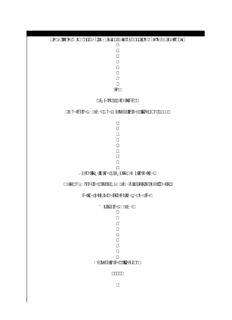
Exploiting Memory Hardware for Use in Cryptographic Operations by Andrew J. Armstrong PDF
Preview Exploiting Memory Hardware for Use in Cryptographic Operations by Andrew J. Armstrong
Exploiting Memory Hardware for Use in Cryptographic Operations by Andrew J. Armstrong Bachelor of Science, The University of Pittsburgh, 2015 Submitted to the Graduate Faculty of the Dietrich School of Arts and Sciences in partial fulfillment of the requirements for the degree of Master of Science University of Pittsburgh 2016 UNIVERSITY OF PITTSBURGH Dietrich School of Arts and Sciences This thesis was presented by Andrew J. Armstrong It was defended on December 8, 2016 and approved by Dr. Bruce Childers, Professor, Department of Computer Science Dr. Daniel Mossé, Professor, Department of Computer Science Thesis Director: Dr. Adam J. Lee, Associate Professor, Department of Computer Science ii Copyright © by Andrew J. Armstrong 2016 iii EXPLOITING MEMORY HARDWARE FOR USE IN CRYPTOGRAPHIC OPERATIONS Andrew J. Armstrong, M.S. University of Pittsburgh, 2016 Recent data breaches have motivated a desire to remove all trust storage platforms (e.g., the cloud). To this end, research has focused on implementing cryptographic access controls on untrusted storage platforms. However, there are issues with the feasibility of implementing such controls, particularly when revocation (i.e., a user losing permission) occurs. This thesis investigates the opportunity to increase the viability of these systems by exploiting new functionality in emerging main memory technology. Technology such as the Hybrid Memory Cube possess the ability to perform certain computations in-memory, without reading data into the CPU. This thesis focuses on implementing a re-encryption scheme, called keystream re-encryption, that computes a stream of key material that can be XOR-ed in-memory to re-encrypt a file, without ever bringing the contents of that file into the CPU. We show that keystream re-encryption can produce 5-10% improvements in Instructions Per Cycle (IPC), while also increasing throughput by 18% and reducing energy consumption by 44-65%. iv TABLE OF CONTENTS 1.0 INTRODUCTION ........................................................................................................ 1 2.0 BACKGROUND & RELATED WORKS ................................................................. 4 2.1 BLOCK CIPHERS .............................................................................................. 4 2.2 RELATED WORK .............................................................................................. 7 2.2.1 CRYPTOGRAPHIC ACCESS CONTROLS ............................................ 7 2.2.2 AES HARDWARE ACCELRATION ........................................................ 9 2.2.3 HYBRID MEMORY CUBE ...................................................................... 10 3.0 EXPERIMENTAL METHODOLOGY ................................................................... 13 3.1 SCENARIOS ...................................................................................................... 13 3.1.1 STANDARD RE-ENCRYPTION ............................................................. 14 3.1.2 KEYSTREAM RE-ENCRYPTION .......................................................... 16 3.2 HYPOTHESES .................................................................................................. 17 3.3 SIMPLE COMPARISON ................................................................................. 18 4.0 EVALUATION ........................................................................................................... 20 4.1 SETUP ................................................................................................................ 20 4.1.1 HYBRID MAIN MEMORY SIMULATOR ............................................. 20 4.1.2 MBED TLS .................................................................................................. 23 4.2 SPEC BENCHMARKS ..................................................................................... 25 4.3 RESULTS ........................................................................................................... 26 4.3.1 SINGLE RUNS ........................................................................................... 26 4.3.2 IMPACT ON CO-RUNNING PROCESSES ........................................... 27 v 4.3.3 THROUGHPUT TEST .............................................................................. 27 4.3.4 ENERGY TEST .......................................................................................... 30 4.4 DISCUSSION ..................................................................................................... 30 5.0 CONCLUDING REMARKS .................................................................................... 35 5.1 CONCLUSIONS ................................................................................................ 35 5.2 FUTURE WORK ............................................................................................... 36 BIBLIOGRAPHY ....................................................................................................................... 37 vi LIST OF TABLES Table 1: Simple Time Comparison of Test Cases ........................................................................ 19 Table 2: HMMSim Configuration ................................................................................................ 23 Table 3: Individual Benchmark Statistics ..................................................................................... 28 Table 4: Block-by-Block Re-Encryption Dual Benchmark Statistics .......................................... 28 Table 5: Energy Consumption Statistics ....................................................................................... 29 Table 6: Throughput Calculations in MB / sec ............................................................................. 29 vii LIST OF FIGURES Figure 1: Block Cipher .................................................................................................................... 5 Figure 2: Counter Mode .................................................................................................................. 6 Figure 3: Simple Access Control Diagram ..................................................................................... 8 Figure 4: HMC architecture .......................................................................................................... 10 Figure 5: Re-encryption via Counter Mode for a single block j ................................................... 15 Figure 6: Keystream Re-Encryption ............................................................................................. 15 Figure 7: HMMSim Overview [2] ................................................................................................ 21 Figure 8: Standard Full File Re-Encryption Pseudocode ............................................................. 24 Figure 9: Standard Block-by-Block Re-Encryption Pseudocode ................................................. 24 Figure 10: Keystream Re-encryption Pseudocode ........................................................................ 24 Figure 11: Throughput Comparisons ............................................................................................ 29 Figure 12: Aggregate IPC Comparisons ....................................................................................... 33 viii LIST OF EQUATIONS Equation 1: Decryption ................................................................................................................. 16 Equation 2: Encryption ................................................................................................................. 16 Equation 3: Combined Re-Encryption .......................................................................................... 16 Equation 4: Misses Per Kilo Instructions ...................................................................................... 26 ix 1.0 INTRODUCTION Typical access control models run under the assumption of a trusted platform, that is, a platform that will not act in malicious way. Specifically, these models assume a trusted reference monitor to enforce the specific policies. If this assumption is violated, then we can no longer trust our reference monitor, or the access control in general, to enforce our policies. For example, data breaches have become a regular occurrence, with more than 6,500 breaches occurring since 2005, leaking over 850 million records [12]. In response to these risks, research has been conducted into implementing access control models that assume an untrusted platform (e.g., cloud services, shared computers, etc.) since, should the platform begin acting in a hostile way, the system has already been designed to handle that undesired behavior. In recent years, many access control models have been proposed to address these issues with untrusted platforms. These models have focused on implementing cryptographic access control. Cryptographic access control does not rely on an enforcement mechanism that lives on the untrusted platform, but rather, it relies on keys that are used to encrypt the data, thus rendering the data unusable unless you possess the key. Possession of the key, therefore, is equivalent to having permission to view that file. Unfortunately, current research on cryptographic access control models consists primarily of static data and permissions and new research has shown that these models can inherit excessive overheads when dynamically changing data and permissions 1
Description: